Wizards of the Coast broke glass on the alarm marked 'anthropomorphic animal Magic set', and it seems to have worked
Bloomburrow is going to be the cute set that draws in a lot of partners and kids.
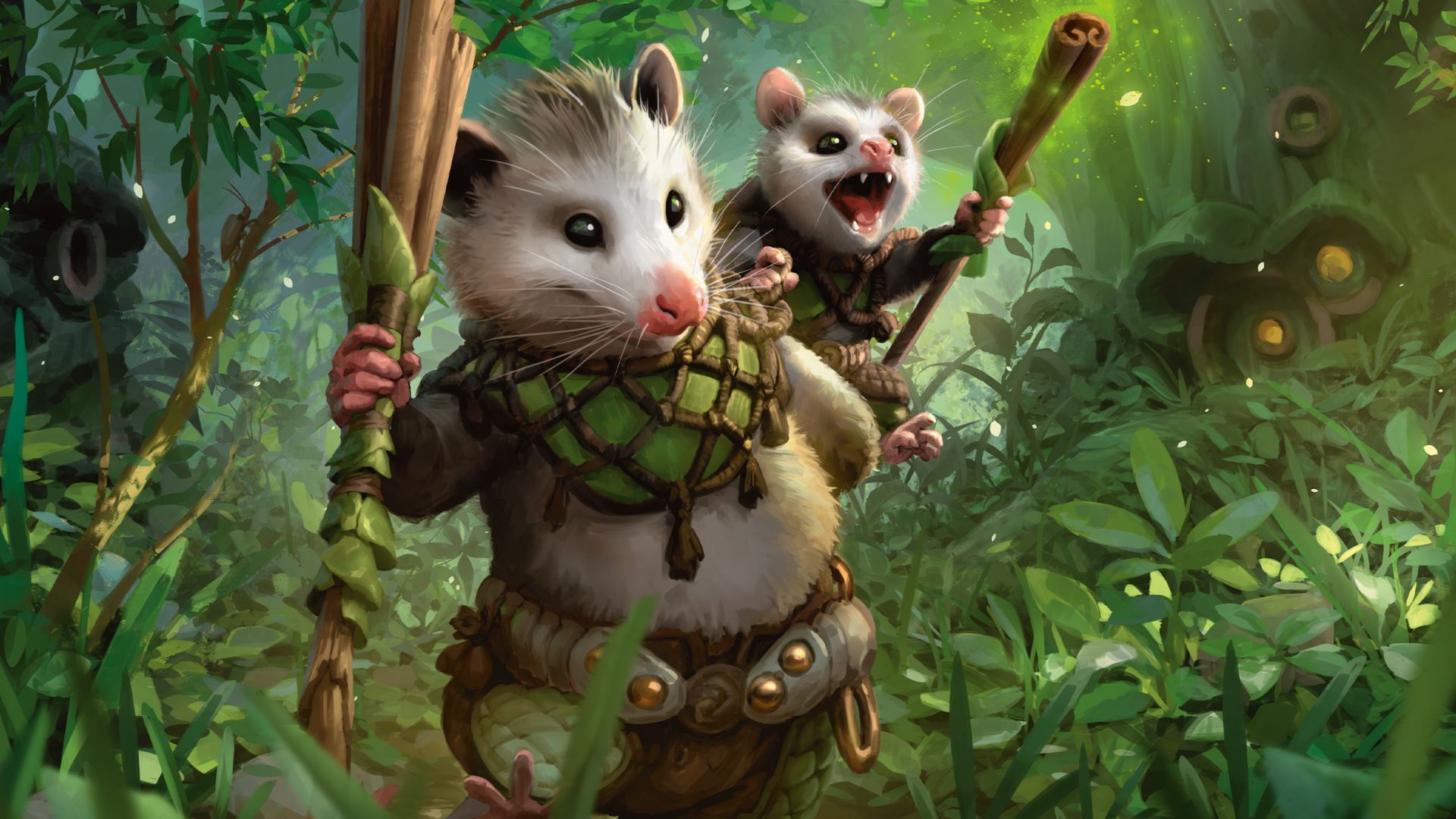
Apparently the concept for a Magic set themed around anthropomorphic animals was originally proposed a ways back, but then got passed over in favor of, like, cowboys and dinosaurs—until now. If the turnout at my local gaming store on prerelease night is anything to go by, pressing the button marked "a set that's a bit like Mouse Guard or The Secret of NIMH" has been worth it. They had to set up extra tables in the hallway to accommodate everyone.
I asked my table what the set reminded them of. Were they traumatized by Watership Down as kids? Did they read the Redwall series with their cookbook descriptions of meals? No and no, but it turns out they'd all read The Wind in the Willows, and one of the others pointed out how much like Beatrix Potter's Peter Rabbit some of the cards look. That's the advantage of doing a set that's a broad take on a subgenre like this rather than a specific crossover—everyone has their own points of reference they bring to the table. (Though I note that David Petersen, creator of Mouse Guard, does alternate art for several of the mouse cards.)
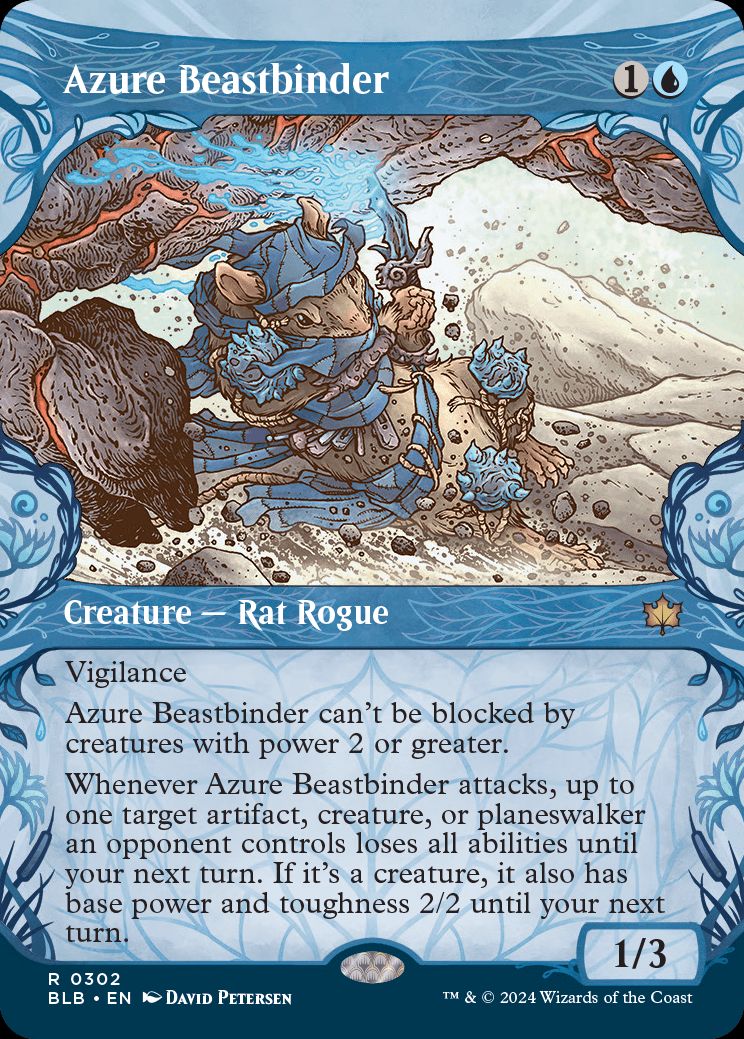
There are 10 main animal types in Bloomburrow: rabbits, birds, otters, squirrels, raccoons, rats, lizards, bats, mice, and frogs. (Along with a handful of possums, and others.) It's tough to build a deck around just one of them, and they synchronize well enough you probably wouldn't want to. I ended up building a white/black deck with a couple of Salvation Swans that can give flying to other creatures (shades of the seagull who helps the rabbits in Watership Down), which obviously would be wasted if the whole deck was birds. I've got a couple of lizards in there to take advantage of this.
The main synergy in my deck turns out to be hurting other people, and also myself. I've got a bunch of cards that trigger when I gain life and when I lose it, but only when it happens on my turn. To really get this engine going I have to be pinging myself for damage, which is always fun because it feels so bold. Oh, these life points? Yeah, I don't need them. I'll just throw a few off the pile.
Lunar Convocation is the MVP here, taking a point of life away from other players if I gain any. And if I both gain and lose life, it gives me a free 1/1 bat. When I gain or lose life, the Star Charter also lets me look at the top four cards on my deck and if one is a creature with power of 3 or less, put it in my hand. (The Star Charter itself is a creature with power 3, so I could use this to go fishing for more.) The Starlight Soothsayer lets me surveil if I gain or lose life, and the Starscape Cleric makes everyone lose a life if I gain any, in addition to the point they're losing thanks to Lunar Convocation.
In my first match I manage to get all these cards in play, along with a lizard assassin who gives me a point of life and causes a point of damage to opponents every time he attacks. Salvation Swan gives that lizard flying, making them key to my whole annoying schtick. Unfortunately I don't pull Lunar Convocation in either of the games that follow and my deck doesn't have much card draw, but when it's humming along it's a fun time.
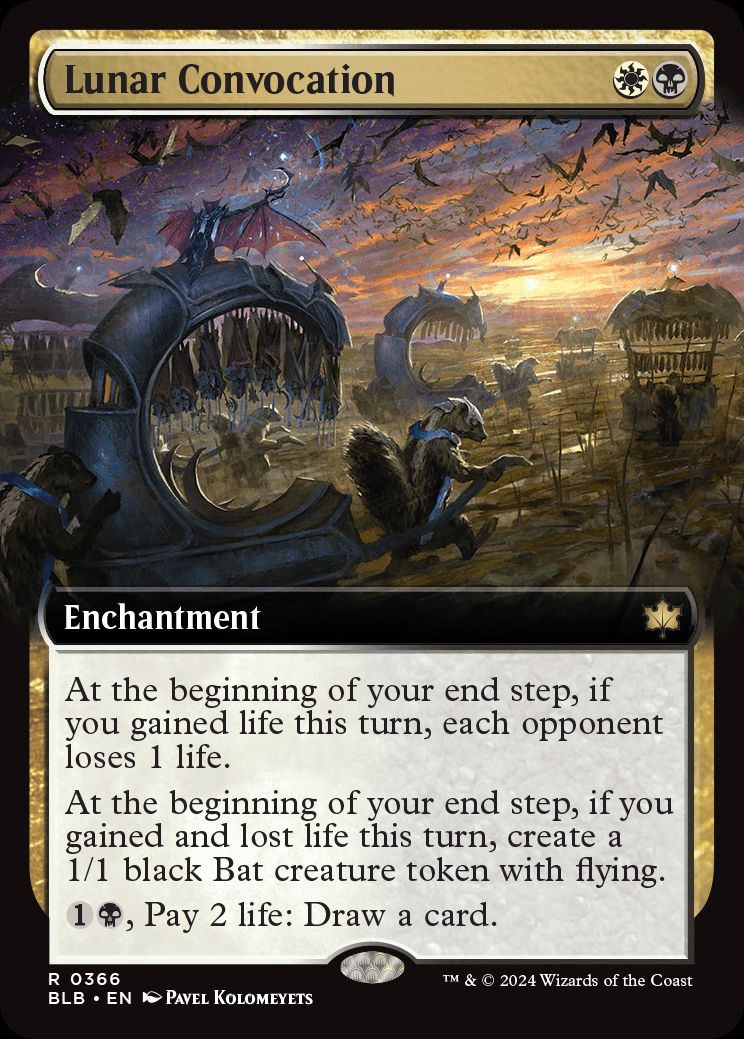
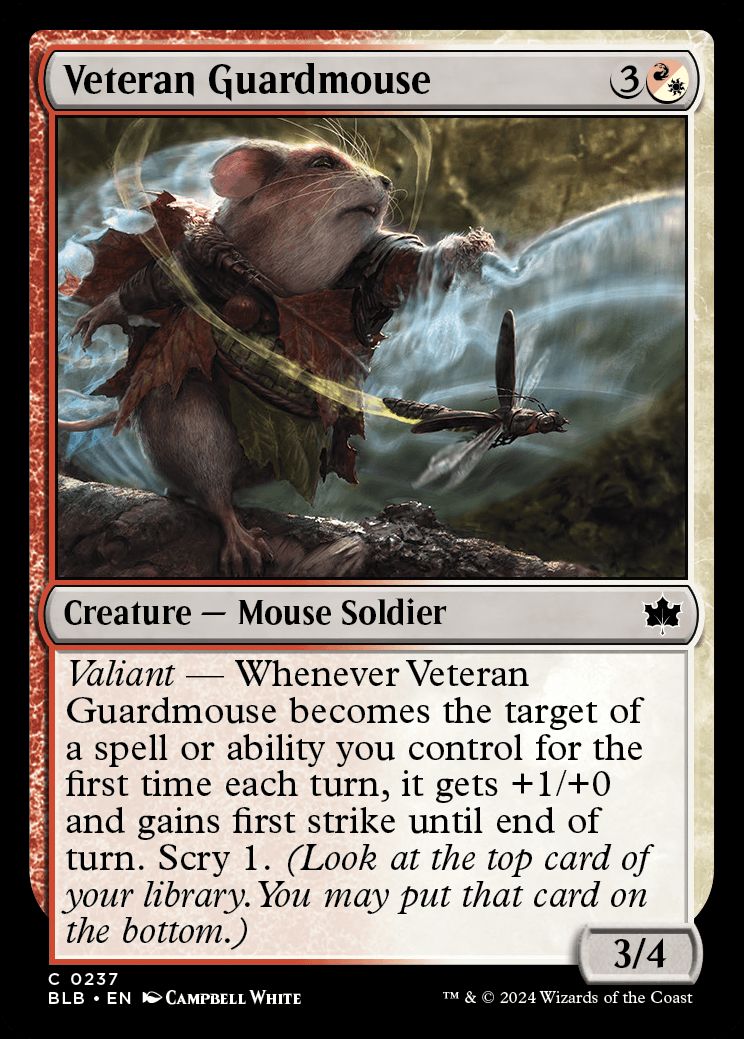
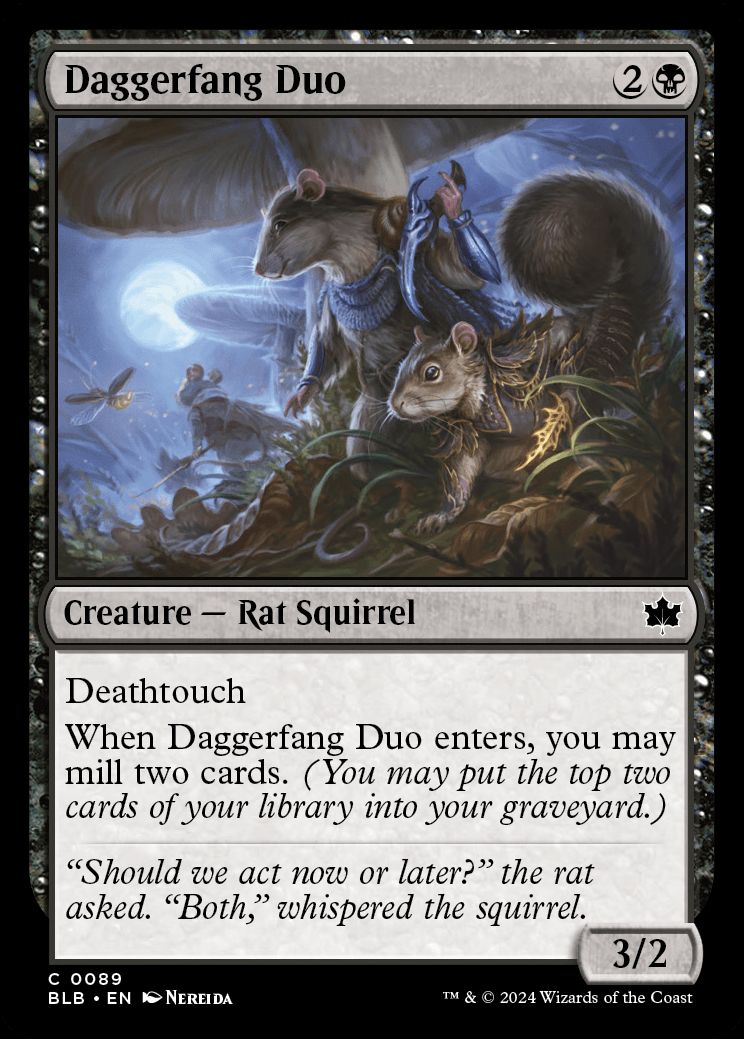
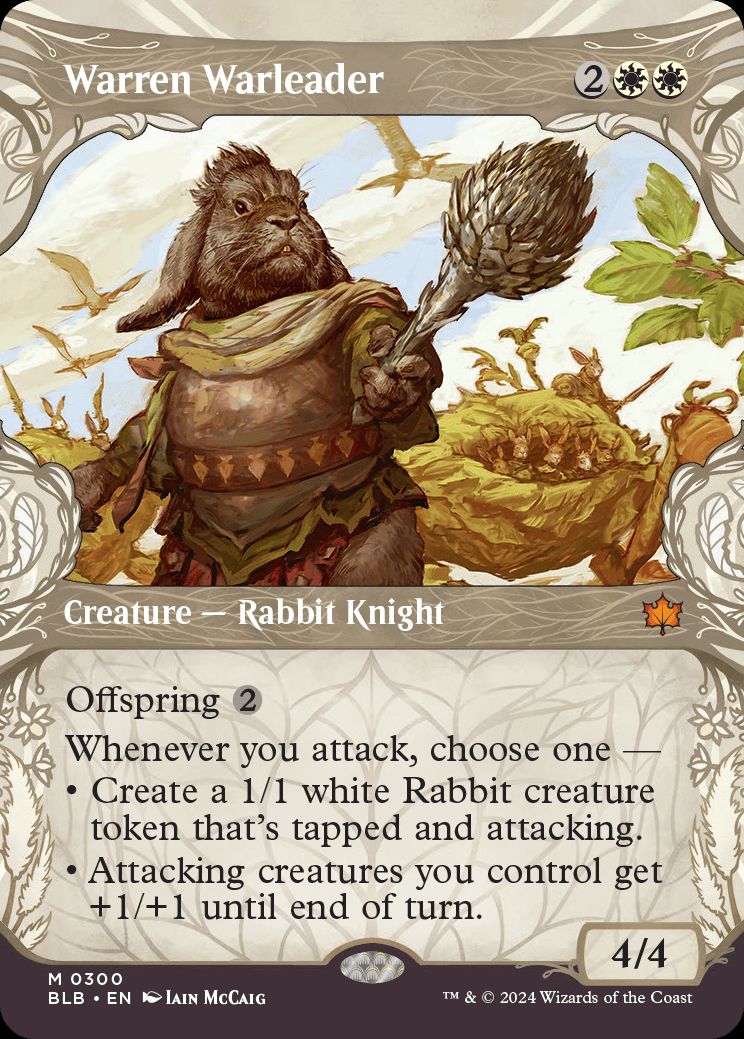
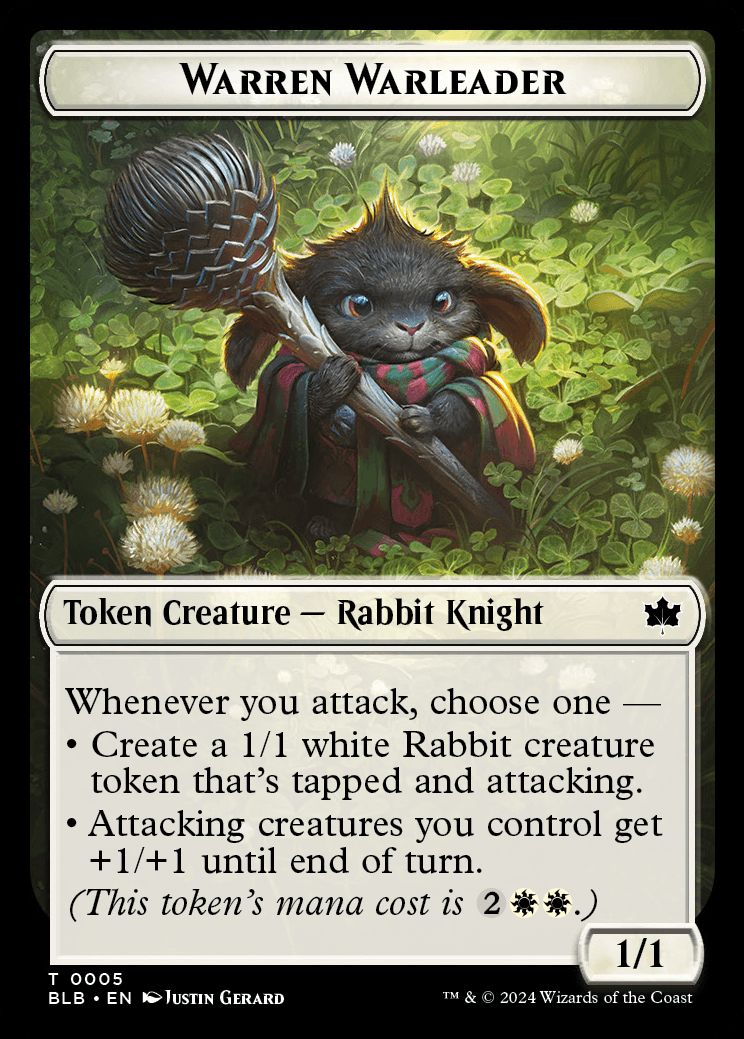
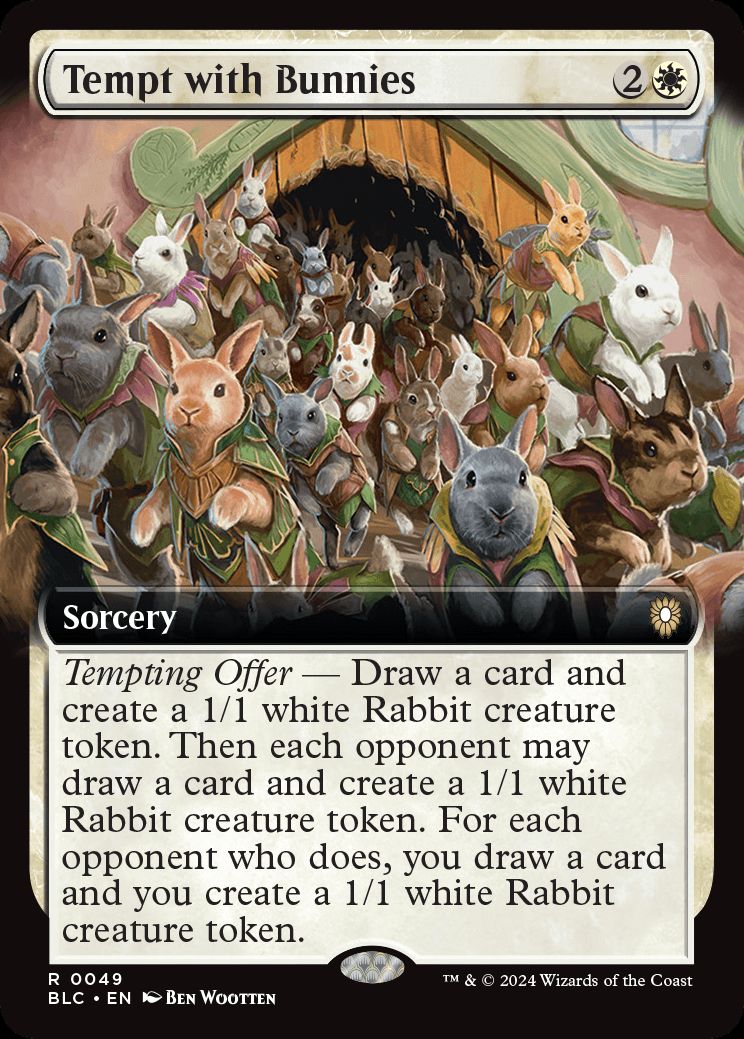
That's a deck with several bats in it, but a modest number of birds and lizards as well. There's a bunch of duo cards in Bloomburrow that represent palled-up pairs of animals, making biodiversity trivially easy to achieve. Bakersbane Duo presents a team-up between a squirrel and a raccoon who work together to steal pastry, which is adorable.
The biggest gaming news, reviews and hardware deals
Keep up to date with the most important stories and the best deals, as picked by the PC Gamer team.
Also adorable is the gift mechanic, which makes some cards more powerful if you give your opponent a little present. That present might be just a 1/1 fish, or it might be a food token they can trade for three life points. There ended up being so many food tokens handed out in my last match of the night—a four-player free-for-all—that I had to bust out the tokens from Tales of Middle-earth that show Frodo all trussed-up in cobwebs for Shelob, which were amusingly jarring next to all the delicious banquets and pies.
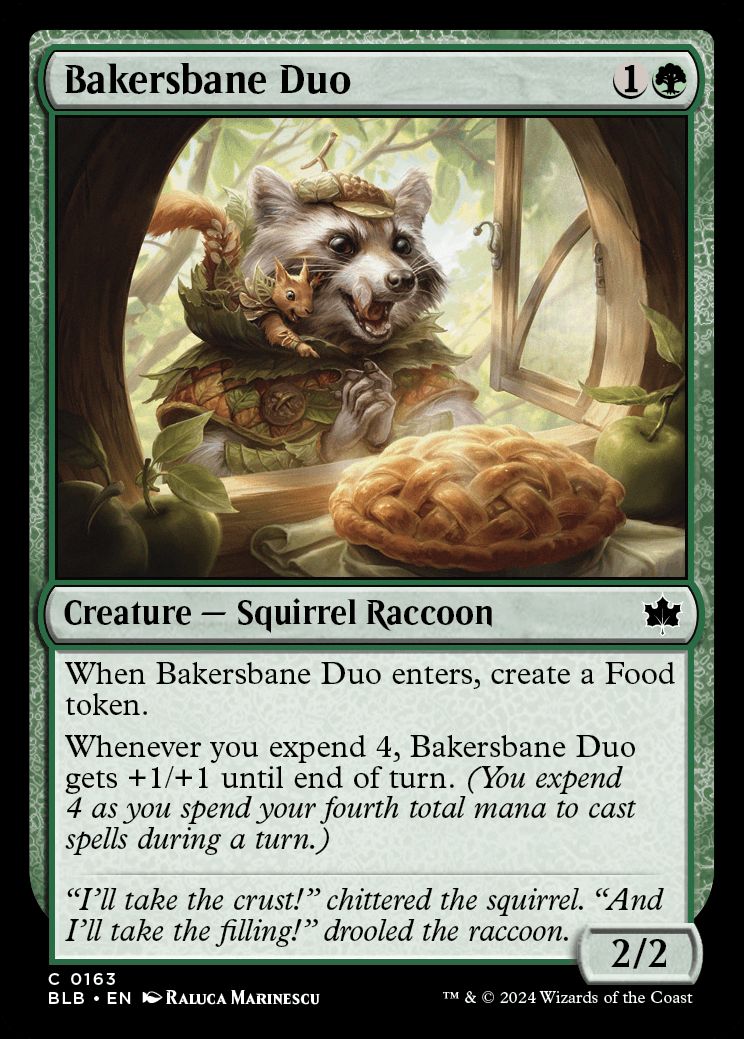
Two paths diverged in the woods. One led toward a set that was based on the Disney's Robin Hood variety of anthropomorphic animal fantasy, where all the animal-folk live in towns, where a fox and a lion can be about the same size, and where some of the characters being predators and others prey doesn't really matter. I'm glad Wizards of the Coast went down the other path with Bloomburrow, toward a setting full of what TV Tropes call Civilized Animals, as opposed to Funny Animals. The end result is a set full of adorable art and broad appeal, rather than something that would be, you know, kind of furry.
Bloomburrow will be out on August 2 for both paper Magic and Arena.

Jody's first computer was a Commodore 64, so he remembers having to use a code wheel to play Pool of Radiance. A former music journalist who interviewed everyone from Giorgio Moroder to Trent Reznor, Jody also co-hosted Australia's first radio show about videogames, Zed Games. He's written for Rock Paper Shotgun, The Big Issue, GamesRadar, Zam, Glixel, Five Out of Ten Magazine, and Playboy.com, whose cheques with the bunny logo made for fun conversations at the bank. Jody's first article for PC Gamer was about the audio of Alien Isolation, published in 2015, and since then he's written about why Silent Hill belongs on PC, why Recettear: An Item Shop's Tale is the best fantasy shopkeeper tycoon game, and how weird Lost Ark can get. Jody edited PC Gamer Indie from 2017 to 2018, and he eventually lived up to his promise to play every Warhammer videogame.

